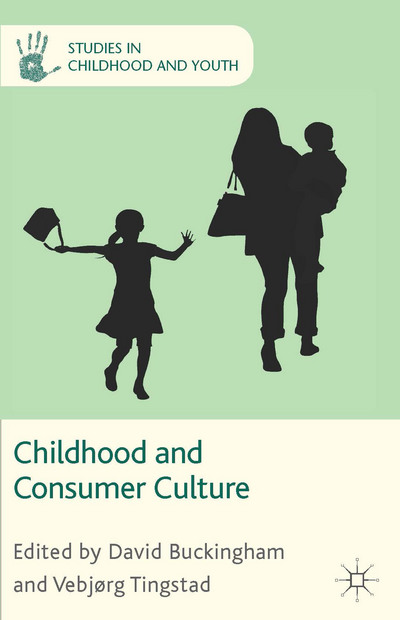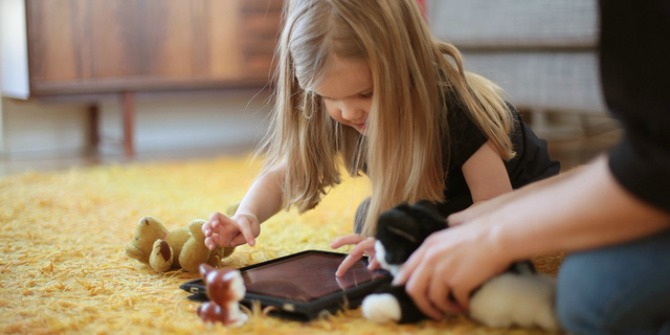Childhood and Consumer Culture is a laudable collection, one that is realistic about the goals of understanding the child consumer. It gives a reading of the historical development of the child consumer and the advent of new marketing technologies, and makes a much needed contribution to the study of the child consumer in very varied contexts, writes Fiona Murphy.

In an era of heightened concern about economic crisis and climate change, the edited collection Childhood and Consumer Culture by David Buckingham and Vebjorg Tingstad offers particularly resonant arguments on the politics of the child consumer. Traditionally a site of anxiety and moral panic, the topic of the child consumer has once more awoken passionate but divisive debate on the broader impact of commercialisation on children. With widespread global concern about the surge in obesity rates in children, the changing nature of play due to the birth of the digital native, and broader environmental concerns, the nexus point of consumer culture, marketing, and the child has accrued a renewed sense of urgency as both a site of societal critique and academic research. These are, however, polarising debates which often construct the child as a victim of exploitation by commercialisation and marketing or as an empowered agent using consumer culture to his/her own generative end. It is through multi-disciplinary empirical research and rich, engaging arguments that the authors in Childhood and Consumer Culture successfullywalk the tightrope between otherwise fraught, heated and, at times, reductive critiques.
Divided neatly into five thematic sections, this is a volume which allows the reader to journey through the history of childhood consumption, the issue of theory and method in children’s research, the practice of contemporary marketing, the social contexts of child consumption and the issue of childhood identity and consumption.
The introduction written by Buckingham and Tingstad paints in broad but insightful strokes an image of the development of academic and societal thinking on the commercialisation of childhood. It evinces how the notion of ‘childhood’ has historically been a site of moralizing about the nature of society more broadly, and argues for an inclusion of children’s voices in these debates. The introduction succinctly maps the intersections between these debates in spaces as divergent as public health policy, academic research, and corporate marketing, thereby illuminating what has been elsewhere called the ‘whole society’ approach to considering the impact of commercialisation on childhood as we have come to understand it today.
Gary Cross in his chapter entitled ‘Valves of Adult Desire: The Regulation and Incitement of Children’s Consumption’ offers a key historical analysis of how marketing to children has been regulated. This is an important critique with which to begin this volume as it directs the reader to both a history of marketing to children but also to changing conceptions of the notion of childhood in relation to the adult. Cross’s argument asks us to consider how adult-child relationships have been reconfigured to the extent that the child has become a focus of adult longing and desire for ‘wondrous innocence’ in the market society; in short, how adults shape children’s relationship to consumer culture. This is compounded by the marketing strategy of commercialising joy which has ultimately engendered a deeper embrace of consumer culture. Cross thus tells us that, ‘as valves of desire that adults try to turn on and off, children are at the heart of the ongoing ambiguity that many adults today feel towards consumer culture,’ thus in spite of heavy regulation in this space, the child consumer remains an ever growing all be unpredictable target market.

Daniel Cook’s chapter ‘Commercial Enculturation: Moving Beyond Consumer Socialization’ offers an understanding into the processes of how children become ‘encultured’ into the commercial space. In so doing, it traces and critiques the development of consumer socialisation; that is, the way in which children come to understand themselves as consumers in the market society. What Cook wants the reader to understand is that consumer socialisation as a theoretical focus is more broadly anchored in the discipline of consumer behaviour which has been until recently heavily influenced by cognitive psychology.
Cook thus asks that we broaden our understandings of how children come to understand themselves as consumers through the notion of consumer enculturation, which he states, ‘places attention on the culture in “consumer culture” as multiple, layered and overlapping webs of meaning which precede any individual child.’ Key to this understanding is the active participation and inclusion of the child consumer’s voice in the research process. This is in line with broader shifts in consumer research and the consumer culture theory movement which recognises the importance of social relations and meaning making in consumption contexts. Cook therefore urges us to consider the richly textured world of the child consumer and to attend to its complexities, exigencies and messiness in order to fully understand children’s participation in the world of goods.
The complexities of the child consumer’s world, one might argue, has been compounded by the digital revolution. Children today have become widely recognised as ‘digital natives’ inhabiting ever more complex technological and virtual spaces then previous generations. Janet Washo in her chapter ‘Children’s Virtual Worlds: The Latest Commercialisation of Children’s Culture’ charts the rise of children’s virtual worlds such as Neopet and Webkinz, and more broadly the ‘advergame.’ In spite of regulation, children are now subjected to integrated advertising and viral marketing in ways never experienced before. This presents new challenges for the child consumer, their parents and regulators but likewise new opportunities. While Washo does not provide detailed analysis of the child consumer’s perspective on these worlds, she does highlight the diversity of viewpoints such as those who see these spaces as creative, generative, and participatory, and those who warn of the serious impact on children’s physical and psychological well-being.
Childhood and Consumer Culture is a laudable collection, one that is realistic about the goals of understanding the child consumer. In its attempt to give a reading of the historical development of the child consumer and the advent of new marketing technologies, it draws on wide-ranging, multidisciplinary empirical and theoretical material thus making a much needed contribution to the study of the child consumer in very varied contexts. It is well-written and accessible and therefore a must read for anyone working with the notion of the child consumer.
Fiona Murphy is an anthropologist and part-time lecturer in Dublin City University, Ireland. She received her PhD in 2009 from the Department of Anthropology, Maynooth University, Ireland. Her research interests focus on Indigenous politics, migration, and sustainability and consumption.






